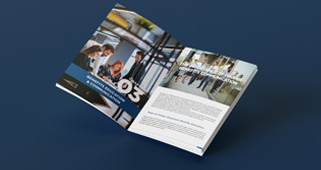Your organization started with a great idea and remains the thriving company it is today because of the team members that work hard to support it. Protecting the mental health of your employees is one of the surest ways to retain great talent and maintain the excellent company culture that attracted your employees in the first place. The issue of burnout becomes compounded when employees go remote, but Benely is here to help. Read on for tips on how to prevent remote employee burnout from the employee wellness experts at Benely!
What is Employee Burnout?
In 2019, the World Health Organization (WHO) officially recognized workplace burnout as a medical condition and a mental health issue. The WHO describes burnout as “a syndrome . . . resulting from chronic workplace stress that has not been successfully managed.” The WHO noted burnout is characterized by “feelings of energy depletion or exhaustion; increased mental distance from one’s job, or feelings of negativism or cynicism related to one’s job; and reduced professional efficacy.” A study published by the European Journal of Preventative Cardiology found that burnout can even lead to severe problems such as depression and heart disease when it’s not addressed.
Studies show that employees working from home due to the COVID-19 pandemic are experiencing burnout at even higher rates than their in-person coworkers. In fact, 69 percent of workers are experiencing burnout symptoms while working from home during COVID-19, which is up 35 percent from around May of 2020. With so many employees working from home in the midst of the COVID-19 pandemic, preventing remote employee burnout is perhaps more important now than it has ever been before.
Tips for Preventing Remote Employee Burnout:
1. Spot the Signs of Remote Employee Burnout Early:
When it comes to employee burnout, many people suffer in silence, absorbing stress until stress itself becomes a problem. That’s why knowing what to look for is critical to burnout prevention. When employees aren’t interacting face-to-face with their managers in the office, symptoms can be difficult to notice. Keep an eye out for the following symptoms, which you can take stock of even without in-person face time. Some of the clearest signs an employee is beginning to experience burnout are:
- decreased productivity,
- a lapse in quality of performance,
- cynicism or a lack of enthusiasm toward clients or projects,
- abrasive words or actions towards coworkers,
- being unopen to feedback, and
- lack of excitement for the company and its culture.
Noticing what’s going wrong with your remote employees and taking a preventative approach before a spiral is crucial to protecting your organization and its people during COVID-19. The burnout phenomenon affects a company’s bottom line through factors like increased employee turnover and lowered employee performance and work quality. When human resources departments take a preventive approach, they can avoid problems before they spiral out of hand.
2. Understand the Causes of Remote Employee Burnout:
If you’ve noticed some signs of employee burnout within your teams, it’s not too late to turn things around for the better. A great first step is to address the root of the problem. Consider the following common burnout causes:
- micromanagement from superiors,
- lack of interactive support and comradery between peers,
- too heavy of a workload for the parameters of the position,
- lack of recognition, including monetary raises or bonuses and social recognition,
- unclear expectations, particularly around new remote work rules, and
- a lack of clear communication from management.
3. Encourage Employees to Take Breaks
The majority (59 percent) of remote employees polled as part of a recent survey conducted by the job site Monster are taking less time off than they normally would be due to the pandemic. And what’s worse, almost half of these remote workers are not planning to take vacation time to decompress in the near future. Human resources departments and team managers can make a concerted effort to encourage employees to take a healthy number of planned breaks from their work, even when they’re working remotely.
Some businesses have introduced the concept of a lunch hour recognized by the entire company, where no client or inter-organization meetings are scheduled unless it’s truly unavoidable. Consider implementing an observed “offline” hour for your employees if possible. This ensures employees working remotely will have time and space to get up from their desks, have a meal, or exercise.
In the same vein, employees should be encouraged to use their vacation and paid time off. It’s easy for remote workers to feel the need to log in even when they’re sick or spending time with family since the lines between home and office are blurred. Encourage healthy behaviors by having your managers model respect for holidays and sick time and refrain from reaching out to employees unless absolutely necessary.
4. Help Your Employees Feel Connected
We previously mentioned that a lack of interactive support could cause remote employee burnout. But even when your employees aren’t in the office, they can still share a sense of community. If possible, have your human resources department organize outings for teams, so remote employees can still choose to spend time together and get to know one another face-to-face. If local restrictions don’t allow it, or employees aren’t comfortable meeting in person yet, remote employee happy hours or game nights are always an option to boost comradery.
5. Revamp Your Employee Wellness Initiatives
For everyone, especially remote workers, exercise and productivity can go hand-in-hand. Encouraging your employees to get fresh air, stay healthy, and incorporate movement into their days can go a long way to preventing symptoms of burnout. Ensure your human resources department highlights the importance of mental health and wellness for remote employees. Get creative if you can! Unique ways to support employees remotely include virtual healthy cooking classes, virtual workout and yoga classes, and team fitness challenges.
Of course, these values should be supported by a comprehensive employee benefits package and an employee wellness program. If your organization could use a hand to implement or revamp your employee wellness program, the employee benefits and wellness experts at Benely have you covered. Benely partners with Wellworks For You, a leading provider of wellness programs that motivate your employees and produce excellent return on investment time and time again. Want to learn more? Contact Benely or request a free demo today to get started.






